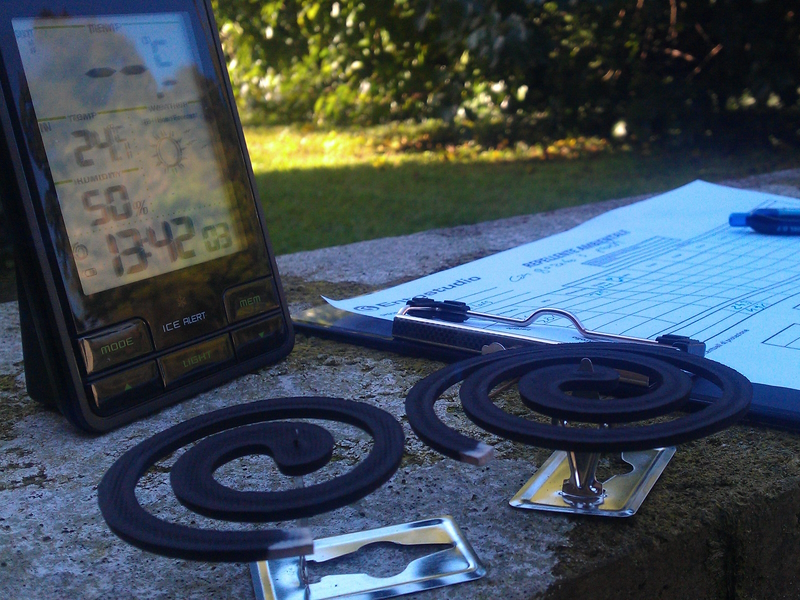When we buy any kind of product, is it a sun screen, a medicine or a mosquito repellent, we first want it is effective. But what does “effective” mean?
It may seem a silly question, the mosquito repellent is effective if, once applied, it makes the mosquitoes do not bite us anymore. Ok, in this way it is easy, but as often happens rules and laws come to complicate the easy stuffs. A case is represented by the spatial repellents, also named “ambient repellent” to avoid misunderstanding with products applied in the intergalactic space against martians and other aliens.
To make the explanation easier, allow me to remember that the active ingredients for pest and vector control are divided in two groups, the insecticides (Product type 18, following the European Biocide Regulation) and the repellents (Product type 19). If a product contains an active registered as “insecticide” its efficacy has to be proven for a killing action while if the AI is registered as “repellent” the product has to repell the insects, without any killing. This division works well in most of the case but creates big problems when it is applied to the ambient repellents.
Mosquito coils and electric diffusers are usually effective in keeping an area free from mosquitoes, especially for species which are not very good flyers. Who buys such products does not expect to kill any insects, this is not his purpose, he just wants to be protected from biting and maybe the coil he bought can do it very well. Unfortunely in most of the cases these products contain Active Ingredients registered as insecticide and therefore, to register a product and make it available on the market, their efficacy has to be demonstrated for the killing efficacy. Because most of these products are for outdoor use, the efficacy has to be proved in its normal use but it is difficult is to kill a mosquito in a garden using a coil. Direct consequence of this is that products effective in protecting the people from mosquitoes are considered not effective by the current law in force of the registration. If the killing efficacy is not proved, the product cannot be registered and will not be available to the consumers.
Another aspect of the “efficacy” of an insecticide is strictly connected to the way it is used. An insecticide is effective when kills the insects, but this can happen if the insecticide get in contact to the insect. An insecticide tested in laboratory can be very effective when the insect is forced to stay in contact to it, but during the normal use, if the insecticide is very irritant, the insects will avoid the contact. Another situation is when the insecticide is applied in a manner which makes not possible it to meet the insects. For instance I can apply an insecticide in my garden treating all the vegetation, against mosquitoes. The tiger mosquito is a lazy insect and remains sitting on bushes and hedges waiting for somebody approaching. Once a person or a dog is near, the mosquito smells it, flyes and bites. If all the vegetation is treated, the tiger mosquito touches the insecticide applied on the leaves and die. But if I stay in the garden up to dinner, once the sun sets, new mosquitoes will fly to me and in this case they are Culex mosquitoes, which have a different behaviour, flying from several hudred meters away directly to me flying above the treated vegetation, without touching it, avoiding in this way the insecticide. It is the same insecticide and both the species are mosquitoes, but the results in terms of control are completely different.
The efficacy is therefore depending not only of the insecticide but of how it is used and against which target. Luckly, to be registered the efficacy of the insecticide has to be proved in real (or simulated) conditions of use, and this avoid in most of the cases bad surprises.




